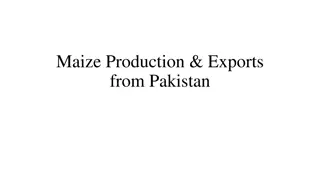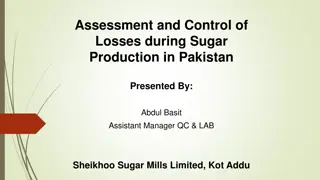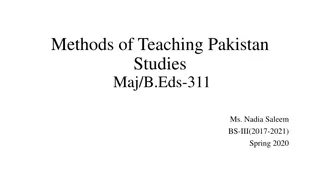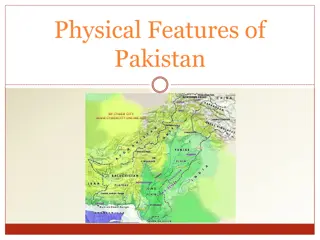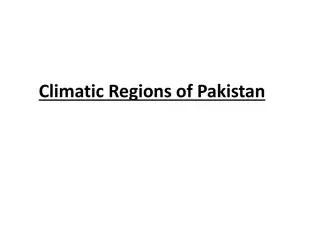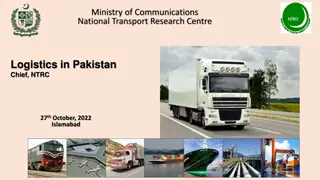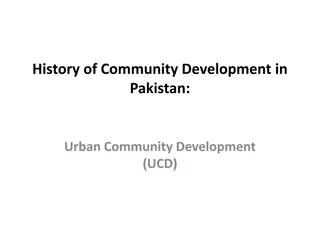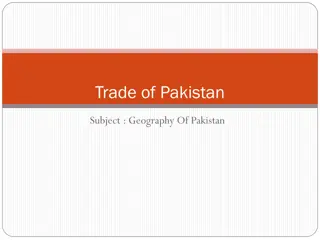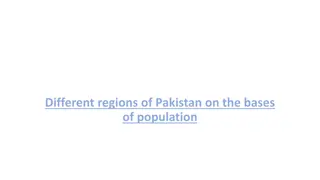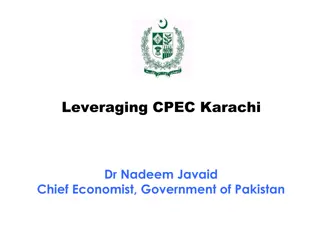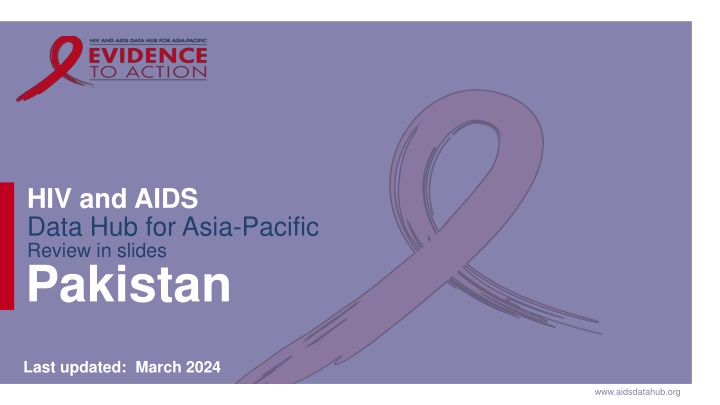
Insights on HIV and AIDS Data in Asia-Pacific: Overview and Statistics
Explore comprehensive data and statistics on HIV and AIDS in Asia-Pacific, focusing on socio-demographic indicators, prevalence, epidemiology, estimated number of cases, and national response. Stay informed about the latest updates and trends in the region.
Download Presentation

Please find below an Image/Link to download the presentation.
The content on the website is provided AS IS for your information and personal use only. It may not be sold, licensed, or shared on other websites without obtaining consent from the author. If you encounter any issues during the download, it is possible that the publisher has removed the file from their server.
You are allowed to download the files provided on this website for personal or commercial use, subject to the condition that they are used lawfully. All files are the property of their respective owners.
The content on the website is provided AS IS for your information and personal use only. It may not be sold, licensed, or shared on other websites without obtaining consent from the author.
E N D
Presentation Transcript
HIV and AIDS Data Hub for Asia-Pacific Review in slides Pakistan Last updated: March 2024 www.aidsdatahub.org
HIV and AIDS Data Hub for Asia-Pacific CONTENT Basic socio-demographic indicators HIV prevalence and epidemiological status Risk behaviors Vulnerability and HIV knowledge HIV expenditure National response 2
HIV and AIDS Data Hub for Asia-Pacific BASIC SOCIO-DEMOGRAPHIC INDICATORS Total population (in thousands) 188,925 (2015) 1 Population aged 15-49 (thousands) 97,643 (2015) 1 Maternal mortality ratio (per 100 000 live births) 178 (2015) 5 Percentage of population in urban areas 39 (2015) 2 Antenatal care coverage - At least one visit (%) 73.1 (2013) 7 Crude birth rate (births per 1,000 population) 29.2 (2014) 2 Under-5 mortality rate (per 1,000 live births) 81 (2015) 2 Human development index (HDI) - Rank/Value 147/0.538 (2014) 4 Life expectancy at birth (years) - Male/Female 66/68 (2015) 5 Adult literacy rate (%) Ratio of girls to boys enrolled at primary level in public and private school (%) GDP per capita (PPP, current international $) 57 (2012) 2 0.85 (2014) 2 5,042 (2015) 2 Per capita total expenditure on health (PPP int. $) 122 (2012) 3 Sources: Prepared by www.aidsdatahub.org based on 1. UN Population Division. (2015). World Population Prospects: The 2015 Revision - Extended Dataset; 2. World Bank. World Data Bank: World Development Indicators & Global Development Finance. Retrieved July 2016, from http://data.worldbank.org/; 3. WHO. (2015). World Health Statistics 2015; 4. Palanivel, T., Mirza, T., Tiwari, B. N., Standley, S., & Nigam, A. (2016). Asia-Pacific Human Development Report - Shaping the Future: How Changing Demographics Can Power Human Development; 5. WHO. (2016). World Health Statistics 2016: Monitoring health for the SDGs; 6. World Bank Group. (2016). World Development Indicators 2016 and 7. UNSD. Millennium Development Goals Database - Antenatal Care Coverage Retrieved May 2016, from http://data.un.org/Data.aspx?q=Antenatal+care+coverage&d=MDG&f=seriesRowID%3a762.
HIV prevalence and epidemiology www.aidsdatahub.org
HIV and AIDS Data Hub for Asia-Pacific Estimated people living with HIV and AIDS-related deaths, 1990-2022 350,000 300,000 270,000 250,000 Number 200,000 150,000 100,000 50,000 12,000 - 1993 1990 1991 1992 1994 1995 1996 1997 1998 1999 2000 2001 2002 2003 2004 2005 2006 2007 2008 2009 2010 2011 2012 2013 2014 2015 2016 2017 2018 2019 2020 2021 2022 PLHIV AIDS-related deaths 5 Source: Prepared by www.aidsdatahub.org based on UNAIDS HIV estimates 2023
HIV and AIDS Data Hub for Asia-Pacific Estimated number of adults (15+) living with HIV and women (15+) living with HIV, 1990-2022 300,000 260,000 250,000 200,000 Number 150,000 100,000 49,000 50,000 - 1997 2010 1990 1991 1992 1993 1994 1995 1996 1998 1999 2000 2001 2002 2003 2004 2005 2006 2007 2008 2009 2011 2012 2013 2014 2015 2016 2017 2018 2019 2020 2021 2022 Adults (15+) living with HIV Women (15+) living with HIV 6 Source: Prepared by www.aidsdatahub.org based on UNAIDS HIV estimates 2023
HIV and AIDS Data Hub for Asia-Pacific Key population size estimates, 2016 Key population size estimates Populations Estimate Year of estimate People who inject drugs (PWID) 113 776 2016 Men who have sex with men (MSM) 832 213 2016 Female sex workers (FSW) 174 101 2016 Male sex workers (MSW) 55 340 2016 Transgender sex workers (TGSW) 52 646 2016 7 Source: Prepared by www.aidsdatahub.org based on Global AIDS Monitoring
HIV and AIDS Data Hub for Asia-Pacific HIV prevalence among key populations, 2005-2017 30% 25 20 15 10 5 0 2005 2007 2008 2009 2011 2016-17 3.7 5.5 2.1 20.9 3.7 5.9 MSM All TG FSW Male PWID MSW TG SW 0.2 10.8 0.4 0.8 0.02 20.8 0.9 6.1 0.9 0.6 27.2 1.6 5.2 15.8 1.5 2.1 8 Source: Prepared by www.aidsdatahub.org based on HIV Second Generation Surveillance in Pakistan and Global AIDS Monitoring 2017
HIV and AIDS Data Hub for Asia-Pacific HIV prevalence among key populations, 2016-2017 National* 7.1 TRANSGENDER PEOPLE (2016-2017) Larkana 18.2 National* 5.4 MEN WHO HAVE SEX WITH MEN (2016-2017) Karachi 9.2 National* 38.4 PEOPLE WHO INJECT DRUGS (2016-2017) Kasur 50.8 National* 2.2 FEMALE SEX WORKERS (2016-2017) Sukkur 8.8 * Weighted HIV prevalence 9 Source: Prepared by www.aidsdatahub.org based on Serological surveys and Global AIDS Monitoring (GAM) reporting
HIV and AIDS Data Hub for Asia-Pacific HIV prevalence among key populations, 2016-17 45 38.4 40 35 % weighted 30 25 20 15 10 7.5 7.1 5.6 5.4 5 2.2 0 PWID TG SW TG MSW MSM FSW Source: Prepared by www.aidsdatahub.org based on NACP and Ministry of National Health Services, Regulations and Coordination (Mo NHSRC). (2017). Second Generation HIV Surveillance in Pakistan, Round 5. Integrated Biological and Behavioral Surveillance in Pakistan 2016-17; and Global AIDS Monitoring. 10
HIV and AIDS Data Hub for Asia-Pacific HIV prevalence among PWID by city, 2016-17 60% 50.8 48.7 50 40 30 25.1 23.2 21.5 17.9 20 16.7 16.6 16.2 13.2 13.2 9.9 8.3 10 5% 3.4 0 Source: Prepared by www.aidsdatahub.org based on NACP and Ministry of National Health Services, Regulations and Coordination (Mo NHSRC). (2017). Second Generation HIV Surveillance in Pakistan, Round 5. Integrated Biological and Behavioral Surveillance in Pakistan 2016-17 11
HIV and AIDS Data Hub for Asia-Pacific Cities in which HIV prevalence among transgender is greater than 5%, 2016-17 All TG TG SW 20 % 18.2 15 15 12.9 10.7 9 8.9 10 8.5 7.9 6.1 5.6 5.4 5 0 12 Source: Prepared by www.aidsdatahub.org based on NACP and Ministry of National Health Services, Regulations and Coordination (Mo NHSRC). (2017). Second Generation HIV Surveillance in Pakistan, Round 5. Integrated Biological and Behavioral Surveillance in Pakistan 2016-17
HIV and AIDS Data Hub for Asia-Pacific HIV prevalence among MSM by city, 2016-17 12% HIV prevalence >5% HIV prevalence <5% 9.79.2 10 7.5 7.4 8 5.75.45.14.9 6 4.1 5% 4 3.7 3.7 3.7 4 1.91.4 1.4 1.31.10.90.7 0.6 2 0 0 0 13 Source: Prepared by www.aidsdatahub.org based on NACP and Ministry of National Health Services, Regulations and Coordination (Mo NHSRC). (2017). Second Generation HIV Surveillance in Pakistan, Round 5. Integrated Biological and Behavioral Surveillance in Pakistan 2016-17
HIV and AIDS Data Hub for Asia-Pacific HIV prevalence among FSW by city, 2016-17 % 10 8.8 8 6 5% 4.1 4.1 3.8 4 3 2.6 2.2 1.7 1.5 2 0.8 0.7 0.4 0.3 0 0 0 0 0 0 14 Source: Prepared by www.aidsdatahub.org based on NACP and Ministry of National Health Services, Regulations and Coordination (Mo NHSRC). (2017). Second Generation HIV Surveillance in Pakistan, Round 5. Integrated Biological and Behavioral Surveillance in Pakistan 2016-17
HIV and AIDS Data Hub for Asia-Pacific Rapidly expanding HIV epidemic among PWID in cities, 2005-2017 60 HIV prevalence (%) 52.5 49.6 50 48.7 42.2 40 30.8 30 20 10 0 2005 2006-07 2008 2011 2016-17 Faisalabad Dera Ghazi Khan Karachi Lahore 15 Source: Prepared by www.aidsdatahub.org based on HIV Second Generation Surveillance in Pakistan 2005 to 2016-17
Risk behaviours www.aidsdatahub.org
HIV and AIDS Data Hub for Asia-Pacific Proportion of key populations who reported condom use at last sex, 2005-2017 % 100 90 80 70 60 50 50 45 43 41 37 40 35 34 32 31 27 27 30 2422 24 23 22 22 21 21 17 20 15 10 0 2005 2006 2008 2009 2011 2016-17 FSW MSW PWID TG SW MSM 17 Source: Prepared by www.aidsdatahub.org based on HIV Second Generation Surveillance in Pakistan and Global AIDS Monitoring 2017
HIV and AIDS Data Hub for Asia-Pacific Proportion of sex workers who reported consistent condom use with clients in the last month, 2005-2017 FSW MSW TG SW 100 % 80 60 40 38 20 13 9 0 2005 2006-2007 2008 2011 2016-17 18 Source: Prepared by www.aidsdatahub.org based on HIV Second Generation Surveillance in Pakistan
HIV and AIDS Data Hub for Asia-Pacific Proportion of PWID who reported using sterile injecting equipment at last injection, 2007-2017 % 100 90 80 77 70 73 60 66 50 40 30 28 20 10 0 2007 2008 2011 2016-17 19 Source: Prepared by www.aidsdatahub.org based on HIV Second Generation Surveillance in Pakistan and Global AIDS Monitoring 2017
HIV and AIDS Data Hub for Asia-Pacific Overlapping risk behaviors: Proportion of key populations who reported injecting drugs in the last six months, 2016-17 Turbat 18.2 TG National 2.4 Hyderabad 10.4 FSW National 5.9 Bannu 20 MSM National 4 % 0 20 40 60 80 100 20 Source: Prepared by www.aidsdatahub.org based on NACP and Ministry of National Health Services, Regulations and Coordination (Mo NHSRC). (2017). Second Generation HIV Surveillance in Pakistan, Round 5. Integrated Biological and Behavioral Surveillance in Pakistan 2016-17
HIV and AIDS Data Hub for Asia-Pacific Interactions and overlapping risk behaviors among key populations in the last six months, 2016-17 100 % 80 55 60 40 26 26 18 16 20 13 11 5 4 4 0 National Quetta Hyderabad National Turbat Larkana National Turbat Bannu National FSW who had sex with PWID MSW who had sex with PWID TG who had sex with PWID PWID who exchanged or sold sex for drugs/money 21 Source: Prepared by www.aidsdatahub.org based on NACP and Ministry of National Health Services, Regulations and Coordination (Mo NHSRC). (2017). Second Generation HIV Surveillance in Pakistan, Round 5. Integrated Biological and Behavioral Surveillance in Pakistan 2016-17
HIV and AIDS Data Hub for Asia-Pacific Average number of clients per day among sex workers and average number of injections per day among PWID, 2016-17 4 3 Number 2 1 0 National Karachi Bahawalpur Kasur FSW Brothel based FSW Street based FSW Kothikhana based FSW Home based FSW PWID average number of clients/day average injections/day 22 Source: Prepared by www.aidsdatahub.org based on NACP and Ministry of National Health Services, Regulations and Coordination (Mo NHSRC). (2017). Second Generation HIV Surveillance in Pakistan, Round 5. Integrated Biological and Behavioral Surveillance in Pakistan 2016-17
HIV expenditure www.aidsdatahub.org
HIV and AIDS Data Hub for Asia-Pacific AIDS financing, 2022 AIDS spending by financing source AIDS spending by service category Other AIDS expenditures 20% Domestic funding 47% Prevention* 14% 20.5 million US$ Care and treatment 66% International funding 53% 24 Source: Prepared by www.aidsdatahub.org based on UNAIDS HIV Financial Dashboard
HIV and AIDS Data Hub for Asia-Pacific AIDS spending by financing source, 2007-2022 25 Millions 20 15 10 5 0 2007 2008 2009 2010 2011 2012 2013 2019 2022 Domestic funding International funding Total AIDS spending 25 Source: Prepared by www.aidsdatahub.org based on UNAIDS HIV Financial Dashboard
National response www.aidsdatahub.org
HIV and AIDS Data Hub for Asia-Pacific Proportion of key populations who are reached with HIV prevention interventions designed for key populations, 2021-2022 % 100 49 42 37 19 0 Female sex workers Men who have sex with men Transgender People who inject drugs 2021 2022 27 Source: Prepared by www.aidsdatahub.org based on Global AIDS Monitoring Reporting
HIV and AIDS Data Hub for Asia-Pacific HIV testing coverage among key populations, 2017-2022 % 100 80 60 53 48 39 40 17 20 0 People who inject drugs Transgender Female sex workers Men who have sex with men 28 Source: Prepared by www.aidsdatahub.org based on Global AIDS Monitoring
HIV and AIDS Data Hub for Asia-Pacific Number of needles/syringes distributed per PWID per year, 2008 2022 300 Number of needles/syringes High coverage: >200 syringes per PWID per year 200 Medium coverage: >100 <200 syringes per PWID per year 100 73 Low coverage: <100 syringes per PWID 22 per year 0 29 Source: Prepared by www.aidsdatahub.org based on Global AIDS Response Progress Reporting and Global AIDS Monitoring
HIV and AIDS Data Hub for Asia-Pacific Number of ART sites and people on ART, 2005 - 2022 40,000 100 34,386 80 30,000 # peopleon ART # ART sites 60 20,000 40 10,000 20 0 0 Number of health facilities that offer ART Number of people on ART Source: Prepared by www.aidsdatahub.org based on - 1.WHO,UNAIDS,& UNICEF.(2006-2010). Towards Universal Access: Scaling up Priority HIV/AIDS Interventions in the Health Sector - Progress Report 2006-2010 ; 2) Pakistan Global AIDS Response Progress Reporting; 3. Global AIDS Monitoring, 4. UNAIDS HIV Estimates 2023 and 5. National HIV Programme Review 2023 30
HIV and AIDS Data Hub for Asia-Pacific ART scale-up, 2005 - 2022 40,000 100 34,386 80 ART coverage (%) 30,000 60 Number 20,000 40 10,000 20 0 - % PLHIV on ART Number of people on ART 31 Source: Prepared by www.aidsdatahub.org based on UNAIDS HIV estimates 2023
HIV and AIDS Data Hub for Asia-Pacific Treatment cascade, 2022 270,000 Number of people 270,000 56,268 34,386 5981 4,112 0 Estimated PLHIV PLHIV who know their HIV status People on ART Tested for viral load PLHIV who have viral suppression * 32 Source: Prepared by www.aidsdatahub.org based on UNAIDS HIV estimates 2023
HIV and AIDS Data Hub for Asia-Pacific HIV testing and treatment cascade, 2022 100 % 95 90 86 80 60 40 20 n/a 13 n/a - PLHIV who know their status PLHIV on treatment PLHIV with suppressed viral load Progress (%) Gap Target 33 Source: Prepared by www.aidsdatahub.org based on UNAIDS HIV estimates 2023
HIV and AIDS Data Hub for Asia-Pacific PMTCT cascade, 2022 2,800 2800 Number 347 N/A N/A 0 Estimated pregnant women living with HIV * Pregnant women receiving ART to prevent vertical transmission Infants receiving a virological test for HIV within 2 months of birth Estimated new child infections * Estimated number of women living with HIV who delivered within the past 12 months 34 Source: Prepared by www.aidsdatahub.org based on UNAIDS HIV estimates 2023
HIV and AIDS Data Hub for Asia-Pacific Punitive and discriminatory laws, 2022 Laws or policies restricting the entry, stay and residence of people living with HIV Law allows for possession of a certain limited amount of drugs for personal use Parental consent for adolescents to access HIV testing Criminalization of same-sex sexual acts Criminalization of TG people Criminalization of sex work NO YES YES * NO NO NO * Death penalty Sources: Prepared by www.aidsdatahub.org based on UNAIDS. (2023). The path that ends AIDS: UNAIDS Global AIDS Update 2023. Geneva: Joint United Nations Programme on HIV/AIDS; 2023.
HIV and AIDS Data Hub for Asia-Pacific THANK YOU slides compiled by www.aidsdatahub.org Data shown in this slide set are comprehensive to the extent they are available from country reports. Please inform us if you know of sources where more recent data can be used. Please acknowledge www.aidsdatahub.org if slides are lifted directly from this site 36





